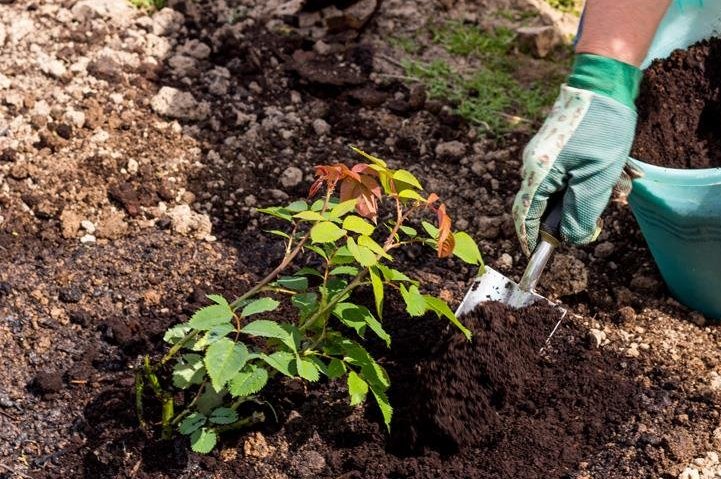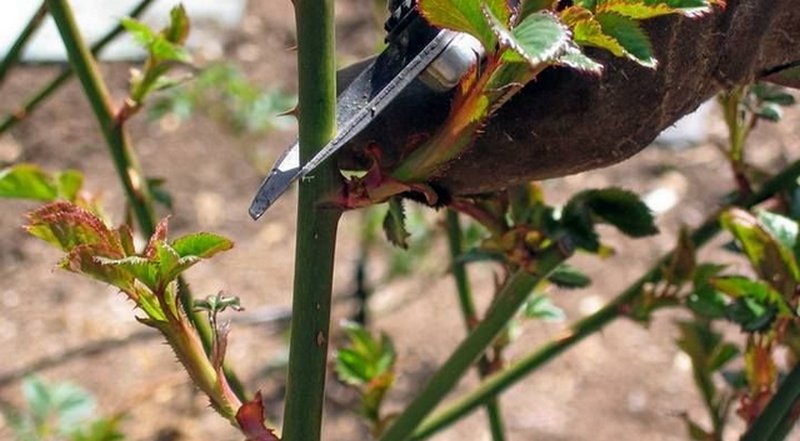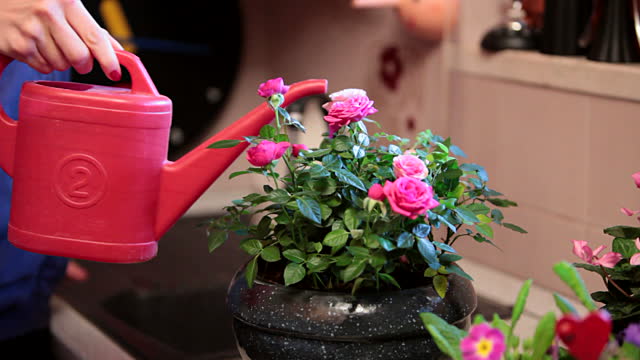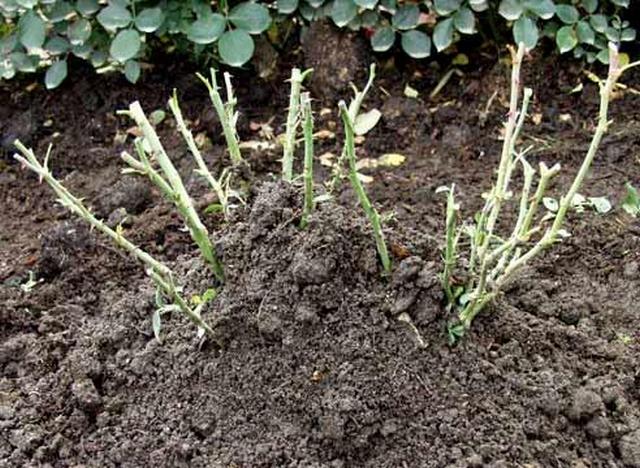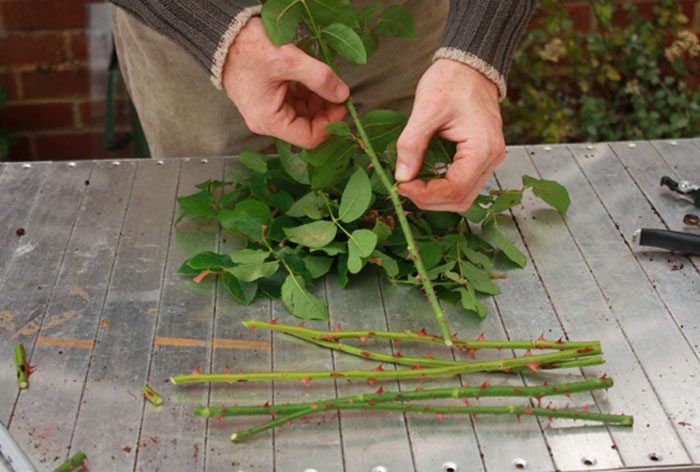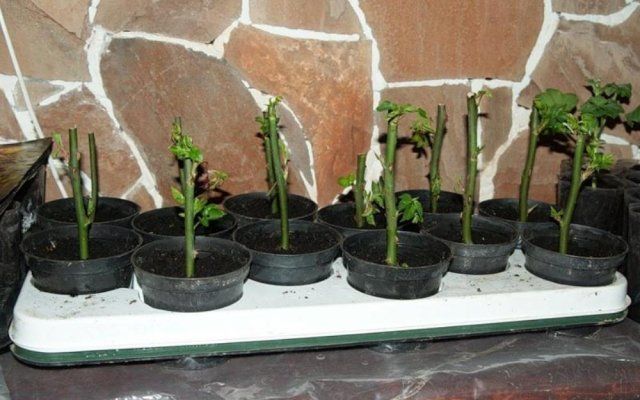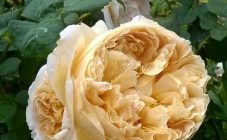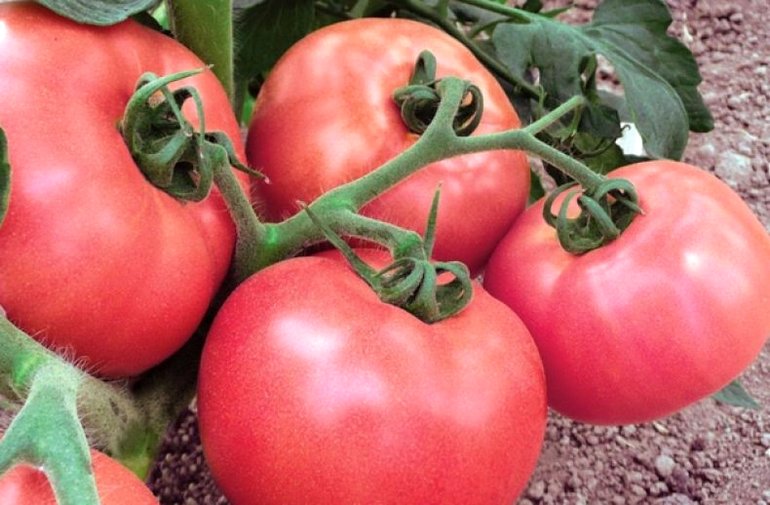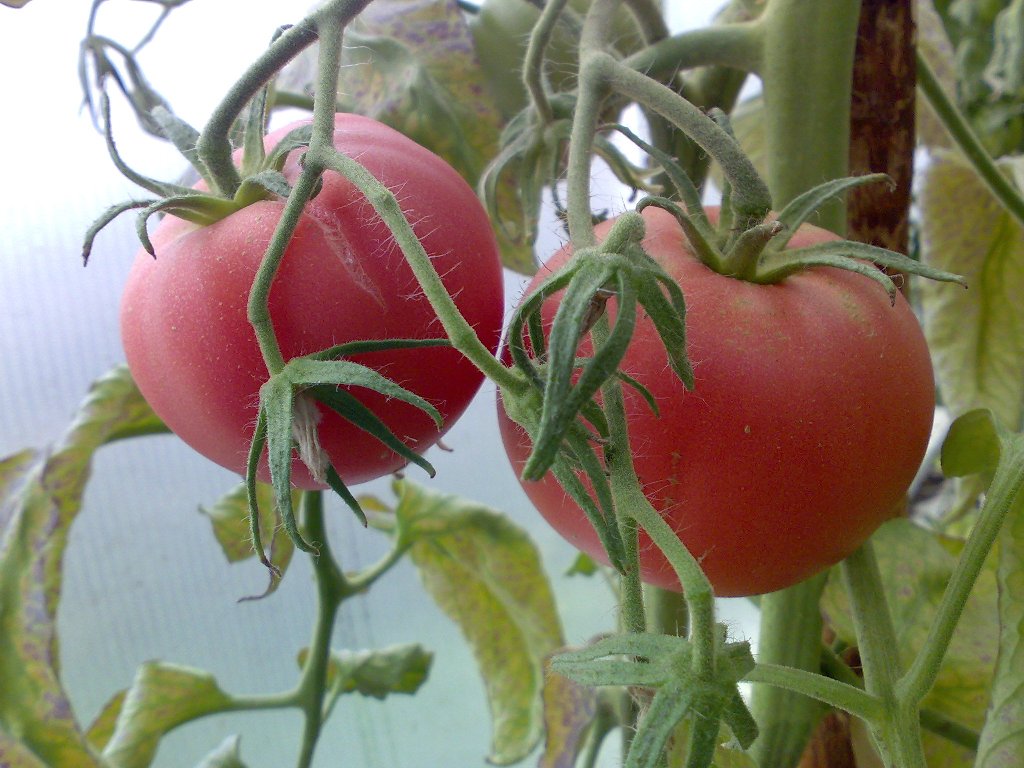Content:
Rose Chippendale is a relatively new flower culture. In 2005, it was taken out by an employee of the well-known German company Tantau, Hans Jurgen Evers (he became one of the co-owners of the company).
The rose got its name in honor of the 13th century English cabinetmaker Thomas Chippendale. He made furniture in the spirit of Rococo, as well as early classicism.
Today the Chippendale rose is very popular among gardeners in Europe and Russia. It is unpretentious to care for, very decorative, has a wonderful fruity aroma.
Other names are also known:
- Ali Man;
- Dushess of Cornwall;
- Music Hall;
- Tan97159;
- Ali May.
In addition, inexperienced flower lovers often confuse the name, calling the flower “Chipenndeil rose” and “Chip and Dale rose.
Description
Rose Chippendale belongs to the group of shrubs (these are large shrub roses characterized by frost resistance - they can withstand temperatures of -27 degrees). It is considered a classic, ancient variety, but with the characteristics of a modern variety.
Rose bushes are powerful, vigorous, compact. Their height is 80-120 cm, width is 70-100 cm. Stems are erect, flexible. Leaves are medium in size, dark green, leathery, glossy, slightly pointed at the ends.
The flowers are large (12 cm in diameter), cupped, grow quickly, have a delicate fruit aroma. Terry petals, densely located (their number is 50-80 pcs).
Collected flowers in inflorescences of 2 - 3 buds on the tops of the branches. There are also single specimens. They are painted in bright orange, apricot, as well as delicate pink shades.
A bush with roses blooms in early June. In areas with a warm climate, the plant can bloom until November.
The bushes tolerate adverse weather conditions well: scorching sunlight, prolonged precipitation, cold, frost. Even during heavy rains, flowers retain their shapes, colors, petals do not fall.
Rose Chippendale is highly resistant to powdery mildew, black spot.
All the positive properties of a flower culture are revealed in the second year of cultivation.
Growing conditions
For planting rose bushes, you need to choose sunny, sufficiently lit, well protected from winds, drafts of the site (light partial shade is acceptable). In the shade, plants develop poorly, they can be exposed to various diseases, the flowers become smaller, become faded.
Rose scrub Chippendale prefers fertile, loose, permeable, drained slightly acidic or neutral soil (loam).
Plants can suffer from powdery mildew triggered by intense, prolonged heat. To prevent the disease, it is necessary to water the bushes abundantly. In the evening, at the time of sunset, they are moistened by sprinkling. Add Fundazol or another fungicide to the water.
Preparing for landing
Flowers are planted in April - mid-May. Depends on the region, climate.
Dig the pit in advance (7 days before planting). The size of the pit is 50 × 50 (the roots of rose bushes should fit freely). Pour water to moisten the well well.
For the Chippendale rose, the soil must be prepared:
- land (2 parts);
- humus (part 1).
You can add a store complex fertilizer for roses (50 - 70 g).
Drainage is poured at the bottom of the pit: expanded clay, broken brick, gravel. In such a soil, the Chippendale will grow especially well.
Planting a rose
Examine the roots, before planting the bush, cut long roots (25 - 30 cm). Three well-developed branches are left (the rest are removed).
The roots are soaked in water for a day.
Rose stems are also pruned. Keep no more than 3 - 5 buds on each.
On top of the drainage layer, a part of the prepared soil is placed in a heap. A rose seedling is lowered into the hole, the roots are carefully laid out. They cover it with earth, tamp it (at this moment, the bush is pulled up a little so as not to leave air cavities).
A roller is formed from the earth along the contour of the planting pit for irrigation.
Water the plant abundantly, and then mulch the trunk circle with peat to retain moisture.
Rose care
The first 14 days after the roses are planted, they should be shaded from the sun with a light cloth. In addition, props are required for plants.
Young seedlings, as well as recently transplanted plants, require abundant watering (once a week, use at least 10 liters of water for each bush). Adult specimens are watered as the top layer of the earth dries out (1 time / 10 days).
Carry out watering activities in the evening. In dry, hot weather, irrigate more often. Sprinkling is also used, because the Chippendale rose is a park rose and loves such procedures. In the fall, watering is reduced. Before wintering, the bushes are generously moistened.
In the first year, the plant has enough nutrients obtained during planting. The next year, in early spring (starting in April), nitrogen fertilizers are applied. You can use a liquid mullein, an aqueous solution of chicken manure. During the budding period, as well as in the fall, potash-phosphorus complexes are used.
Bushes are pruned twice - in spring (April), in autumn (October). In spring, every year before the awakening of the plants, diseased, weak, damaged, old, dry branches are removed, annual shoots are trimmed by 1/3, as well as adult stems by 4 - 5 buds. The growths are shortened (by 2 kidneys). Cut out the wild growth.
In order for the flowers to be large, the lateral shoots are cut off at the development stage. One bud is left on one branch. In the autumn, unformed shoots, dried flowers, and remaining leaves are removed. Shorten the stems so that the bushes winter comfortably.
Remove wilted buds after the bushes have faded for the first time. This will provoke further flowering. After the second wave, the inflorescences are not cut off. Otherwise, young shoots will grow. They will not have time to mature before the onset of winter.
Preparing for winter
In October, they begin to prepare the Floribunda Chippendale rose for the winter period.
First, reduce watering. Irrigate intensively only once for a favorable wintering.
Then the stems are shortened - all shoots, leaves, inflorescences are removed. Plants are treated with fungicides.
They scoop leaves and vegetable debris from under the bushes and burn everything.
Before covering the plants, they are fed (at the end of August) for immunity with a strengthening solution. Its composition (for 10 liters of water):
- superphosphate (25 g);
- potassium sulfate (10 g);
- boric acid (2.5 g).
A month later (early September), you can use the following mixture:
- water (1 bucket);
- superphosphate (15 g);
- monophosphate (16 g).
At the onset of frost (-5 degrees), the bushes (35 cm high) are spud with peat or rotted compost. Foliage and manure are spread in the aisle. If the climate is warm and the winter is mild, you can leave the branches of the bushes on the supports. Cover them with spruce branches, agrofibre, tie with a cord.
In cold regions, roses are covered more carefully before wintering. They also spud when the first slight frosts (-10 degrees) appear, remove the weaving branches from the supports, lay them on the laid branches of spruce branches or dry boards. Cover with straw, spruce, burlap, fix with twine. They put supports-arcs or wooden structures. Wrap up with covering material (use double spanbond).
In the spring (end of March), when the air warms up above 0 degrees, the shelters are cleared of snow, the ends are slightly opened so that the plants are ventilated. Covering material is removed at the end of April - beginning of May.
Reproduction
The Chippendale rose is propagated in two ways.
- Cuttings.
It is carried out in the summer. In this case, a shoot that has faded is used.
Cuttings are cut with a length of 15 - 20 cm, making sure that each has 5 leaves. Cut the lower tips as close to the leaf stalks as possible.
Choose a partial shade for planting the shoots. They bring in humus, dig up the garden bed.
The three lowest leaves are removed from the petioles. Treat with stimulating solution (Kornevin, Epin, Zircon).
The shoots are deepened at an angle to the first remaining leaf. Cover with transparent plastic wrap. After 3 years, they are planted in a permanent place.
- Rooting layering.
They dig a groove near the bush (it should be shallow) and lower a healthy lateral shoot into it. It is instilled in and fixed with a bracket.
The bark is removed from the branch in several places (as if scratching). This must be done in order for the roots to sprout. You do not need to cover the top of the shoot.
Water regularly, do not allow the soil to dry out. At the same time, the buds that are formed are constantly cut off so that the power of the rose goes to the roots.
The rooted shoot is planted for the next spring.
The Chippendale rose is planted in parks, gardens, squares, summer cottages, it is used to decorate city flower beds, flower beds, and is used for cutting. Despite the youth of the variety, this rose is already well known all over the world. At the same time, judging by the description, even a novice gardener can grow a beautiful flower.



